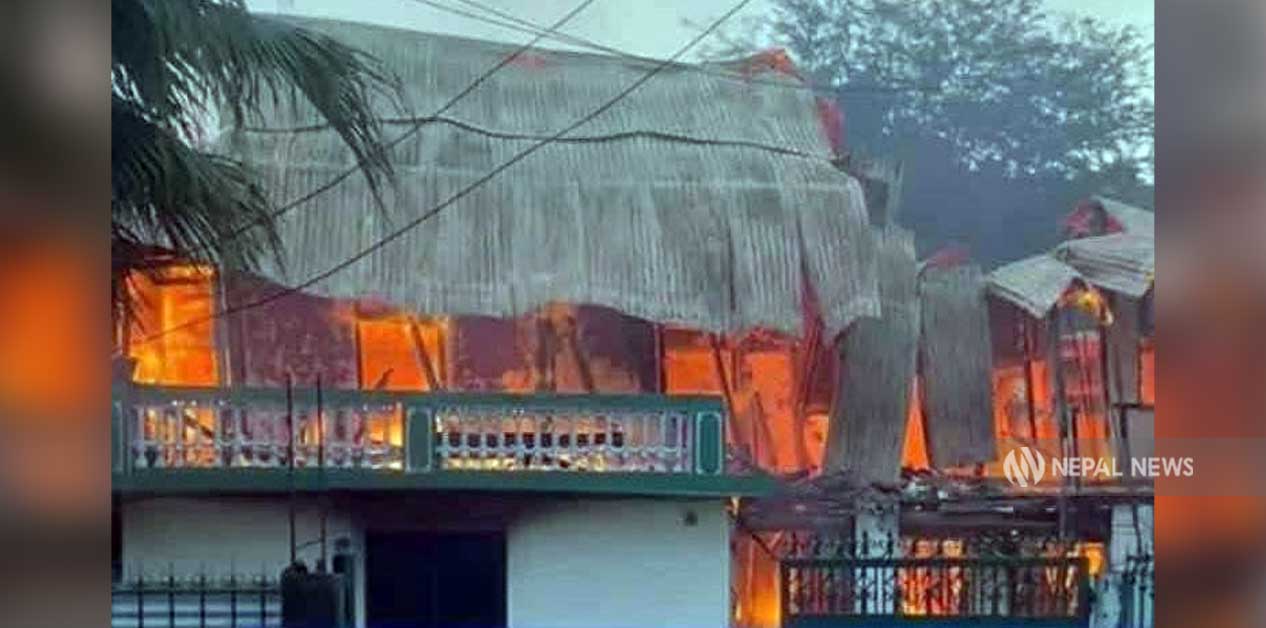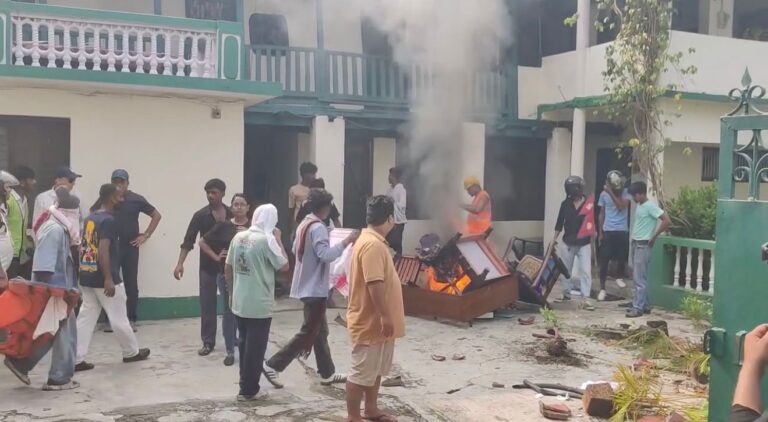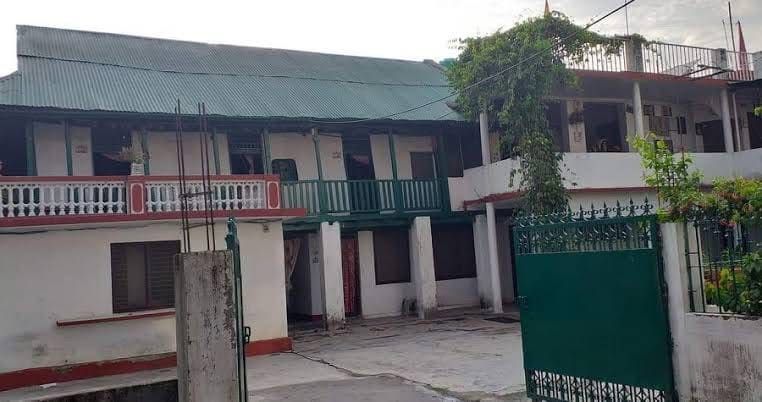
Residence of three prime ministers, spared even during Panchayat era, reduced to ashes in the republic

KATHMANDU: In 1994 after the government’s policies and programs failed, then Prime Minister from Nepali Congress Girija Prasad Koirala resigned. That same year, Ganeshman Singh, the ‘Supreme Commander’ of the 1990 People’s Movement, embarked on a public awareness campaign traveling from Mechi to Mahakali.
At that time, Singh and Koirala did not share a cordial relationship. During the public awareness campaign, when Singh reached Biratnagar, it became a matter of curiosity even for leftist intellectuals whether he would return to the Koirala residence or not.
However, Singh not only refrained from going to the Koirala residence but also stayed there overnight. The next day, he held a press conference placing leaders close to Girija Prasad to his right and left, openly criticizing Koirala’s policies.
The Koirala residence, respected by Singh for his ascetic image, was reduced to ashes on September 9 during the Gen Z protests.
The house, built in 1929 by Krishna Prasad Koirala, had hosted former Indian Prime Minister Chandrashekhar and provided shelter to the renowned Indian writer Phanishwar Nath Renu. It was set on fire in the name of the Gen Z movement.

Protesters setting fire to the Koirala residence
This residence was home to three of Nepal’s prime ministers: Matrika Prasad Koirala, B.P. Koirala, and Girija Prasad Koirala. Along with the building, documents related to these three prime ministers were also destroyed in the fire.
During the Rana era, Krishna Prasad Koirala sought to convey a message to Chandra Shamsher Rana about the plight of poor eastern citizens by sending parcels of tattered and dirty clothes, highlighting the public’s condition. This forced him to leave the country. After reaching India, he joined Mahatma Gandhi’s “Quit India” movement.
After the rise of Bhim Shamsher, Krishna Prasad returned to Biratnagar and established the Koirala residence on land given by his elder brother Narayan Prasad. From this house, prominent Nepali political figure B.P. Koirala launched anti-Rana campaigns, endured imprisonment, and ultimately contributed to ending a century-old Rana regime.
In 1960, after King Mahendra dismissed his elected government, this house stood firmly against the Panchayat system.
Not only during the Rana period but also throughout the 30 years of the Panchayat regime, this house repeatedly faced attacks from ruling authorities. During the 1980 referendum, a group of youths attempted to set the house on fire, but local residents drove them away.
On September 9, when the Gen Z protests led to vandalism and arson, not even the security forces or local residents intervened.
Rooms where children of martyrs like Thagi Raj Dahal studied, along with B.P.’s office, were reduced to ashes. “A house that fought against the Rana and royal autocracy to secure people’s rights was deliberately turned to ashes in the name of Gen-Z, in our understanding,” says Deepak Chapagain, head of Nepali Congress Biratnagar Metropolitan City.
The wooden house built by Krishna Prasad after returning from India during Bhim Shamsher’s era was completely destroyed. However, the cement-added veranda and the bed used by Girija Prasad survived.

Koirala residence before arson
The portion of Koirala residence belonging to Shekhar Koirala was where he ran his secretariat on the lower floor. Currently, the secretariat, two computers, documents of the party including those of general convention representatives and regional representatives, have all been destroyed.
“Shekhar repeatedly asked the party president to understand the sentiment of the Gen Z generation. We never imagined that the Koirala residence would be set on fire,” he said.
A few years ago, officials from the B.P. Museum in Sundarijal, Kathmandu, had taken some of B.P.’s documents and belongings, which were saved. Other letters written by Krishna Prasad were destroyed in the fire.
District President of Nepali Congress Dig Bahadur Limbu criticized the destruction of the heritage Koirala residence. “Those who fought for democracy, educated orphaned children and children of martyrs—their house was vandalized. This was not the sentiment of the Gen Z movement. Those responsible for burning the house must be punished,” he said.
After the establishment of democracy in 1990, a group of young Nepali Congress activists had marched from the Koirala residence toward the nearby house of Matrika Prasad.
Although Krishna Prasad’s eldest son, Matrika Prasad, had joined the Panchayat system after 1960, the youths wanted to burn his house. However, Shekhar Koirala’s mother, Nona, stood at the entrance of the Koirala residence and blocked them. She told them at the time, “If you want to enter Matrika Babu’s house, you must crush my chest first.”
Thirty-six years ago, Nona prevented the fire from spreading to others’ homes, but now that same house has been destroyed.